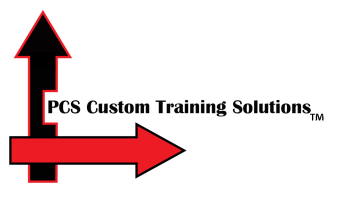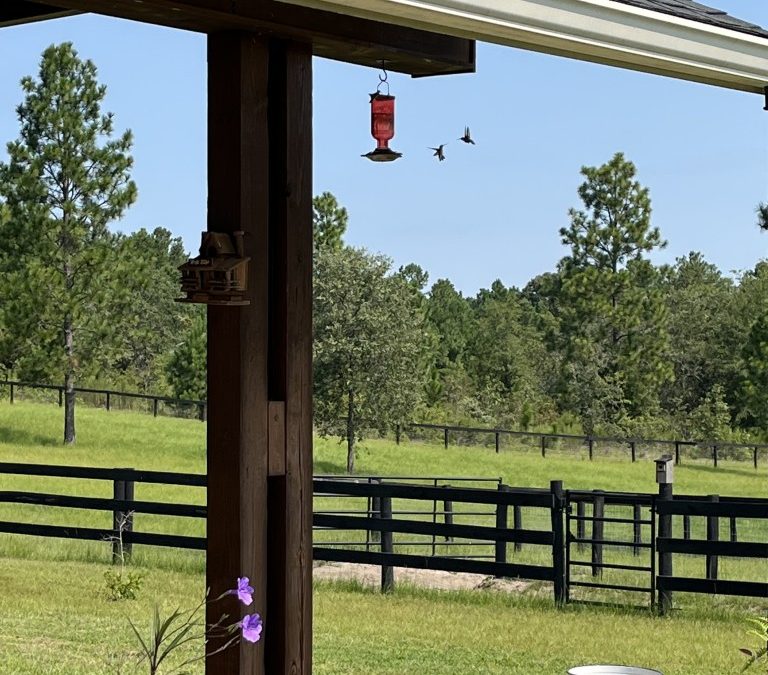This weekend we had a hummingbird crisis.
One flew into our barn, which is large and has high ceilings, and could not find her way out.
She flew furiously along the very highest levels of the ceiling, darting here and there as hummingbirds do.
My heart raced in worry. There wasn’t much time before she’d wind up exhausted. These fierce and fascinating creatures burn calories at an epic rate, and their super-high metabolism requires fuel at least every fifteen minutes.
I googled for a solution, and quickly turned off the barn lights, closed all the doors except the large overhead door, and placed bright red objects just outside. (Hummingbirds are attracted to the color red. I blame Tom’s Milwaukee tool cases for luring her in.) Tom helped me hang the birds’ favorite feeder from the door itself, a beacon to encourage her to fly low. I even found YouTube videos of hummingbird songs and sounds and placed my phone outside the door with the volume high.
“I think it’s up to the hummingbird now” said Tom, a wise man.
So I walked away.
Many years ago, I was teaching hazardous chemical spill response courses regularly.
A veteran fire chief (there were so many in my classes), perhaps Larry Yonkin from Corning, taught me about the priorities for any responder during a hazmat emergency.
- Me
- My Stuff
- My Buddy
- My Buddy’s stuff
- The public
- The victim(s)
- Everything else
It made sense, and I found it was something I taught in every class, writing it on a flip chart, engaging in intellectual and sometimes heated discussions about the sequence.
Number one, me, well, that’s easy. If you’ve ever heard a flight attendant remind passengers in the pre-flight briefing to place their oxygen mask before assisting others, you appreciate that you are of little use to others if you are incapacitated or dead. Emergency response comes to a hard stop. Game over.
My stuff, also logical. Particularly in hazmat response, your personal protective equipment and your SCBA air supply are critical, so you check that your air gauge reads full before going into the hot zone.
Your buddy and his stuff, well, all sentiments aside –assuming you don’t particularly like your buddy– he and his stuff are critical because it is your buddy who will drag you out if things go wrong. And vice versa as well. You check his air supply gauge as well.
What really sparked controversy was how far the victim fell down the list. Intellectually, everyone could agree that protecting yourself and your buddy was high priority, and necessary to the success of the response. Pragmatically, protecting the public is a risk assessment numbers game, and sure, one victim (regardless how tragic) or even ten or a hundred, could pale in comparison to the sheer number of others in harm’s way.
Collectively, my classes would agree, yepyepyep, perhaps after some back and forth, those priorities were in the correct order.
I would remind them that the hardest part of responding to a catastrophe was in accepting that “it” – whatever that was – “it” had already happened. There was no turning back time, no undoing of “it.” All one had was doing what one could in that moment to prevent it from getting any worse, and carrying on.
I cannot think of a single class where we did not, collectively, come to consensus on that hard reality.
And yet.
During the third day of every 24-Hour Hazmat Technician course, we would wrap up the course with an in-person drill, complete with Level A or Level B PPE, SCBAs and all. The scenario would involve some catastrophic chemical release and a victim, unconscious, right in the thick of it.
The protocol in such cases is clear. The team arrives, does a size up, sets up decon and command, then and only then suits up to take action. Two in, two out, two on standby in many circumstances.
How long did that take? 10 minutes, perhaps 20, with a really capable and well-staffed and efficiently-led team with the right resources.
All the while, the victim lies unconscious, some co-worker play-acting, or in some cases, a dummy, an inanimate object, lying there within sight, and yet, unreachable.
In nearly every class, it was all too much for someone. They’d be setting up decon, or helping someone don their fully encapsulated suit, and then turn to me, and implore – “We can’t just do nothing! This is taking too long.”
I would remind them, patiently, that “it” already happened, and that we couldn’t send in a team without decon, without backup, in case we had another exposure incident.
It would take as long as it would take.
Sometimes it’s just up to the hummingbird.
I’ve been that frustrated person in real life, and I suspect you have too. It is part of the journey, achingly beautiful, the dance we all do.
“We can’t just do nothing.”
As I type this, I have too many people in my life to count on both hands who are struggling with a parent in failing health, or a pet, a spouse or a parent with cancer, a loved one suffering from mental health issues or addiction, or impacted by someone’s physical or emotional abuse.
In almost all circumstances, they’ve done far more than nothing.
In some cases they’ve gone to heroic efforts, sacrificing their own health and well-being to try to rescue that victim.
Getting their parents to make wise choices for themselves, or standing by quietly while they make poor ones, respecting their right to do so.
Struggling for the magical words that get someone addicted or struggling with mental health to seek effective help, knowing intellectually that no such words exist.
Making cruel decisions about quality of life for a horse or a dog or a cat, wondering how they’ll know for sure that they’re making the right choice at the right time to prevent suffering.
Getting someone into what we hope is the best treatment plan for a cancer diagnosis. Perhaps bearing witness as they weigh an option for no treatment at all.
Trying to lure a hummingbird out the door.
Drawing the line, emotionally, between the “it” that has already happened and protecting their own one precious life. Sometimes at great cost.
As for the hummingbird: After several minutes of distracting myself with a task outside the barn, all while my stomach was churning for her dilemma, I returned.
She’d managed to free herself from the barn. Smart little girl.
Our yard in South Carolina is what Tom describes as “Patti’s Wildlife Sanctuary” with bird (and fox squirrel) feeders and pollinator plants and bluebird houses galore. The patio is sometimes a noisy place to sit amongst finches and crows and cardinals and the ever-battling hummingbirds, jousting viciously over the four hummingbird feeders.
I sat out there this morning wondering which one was the wayward barn visitor.
Sometimes the “it” has a happy ending.

